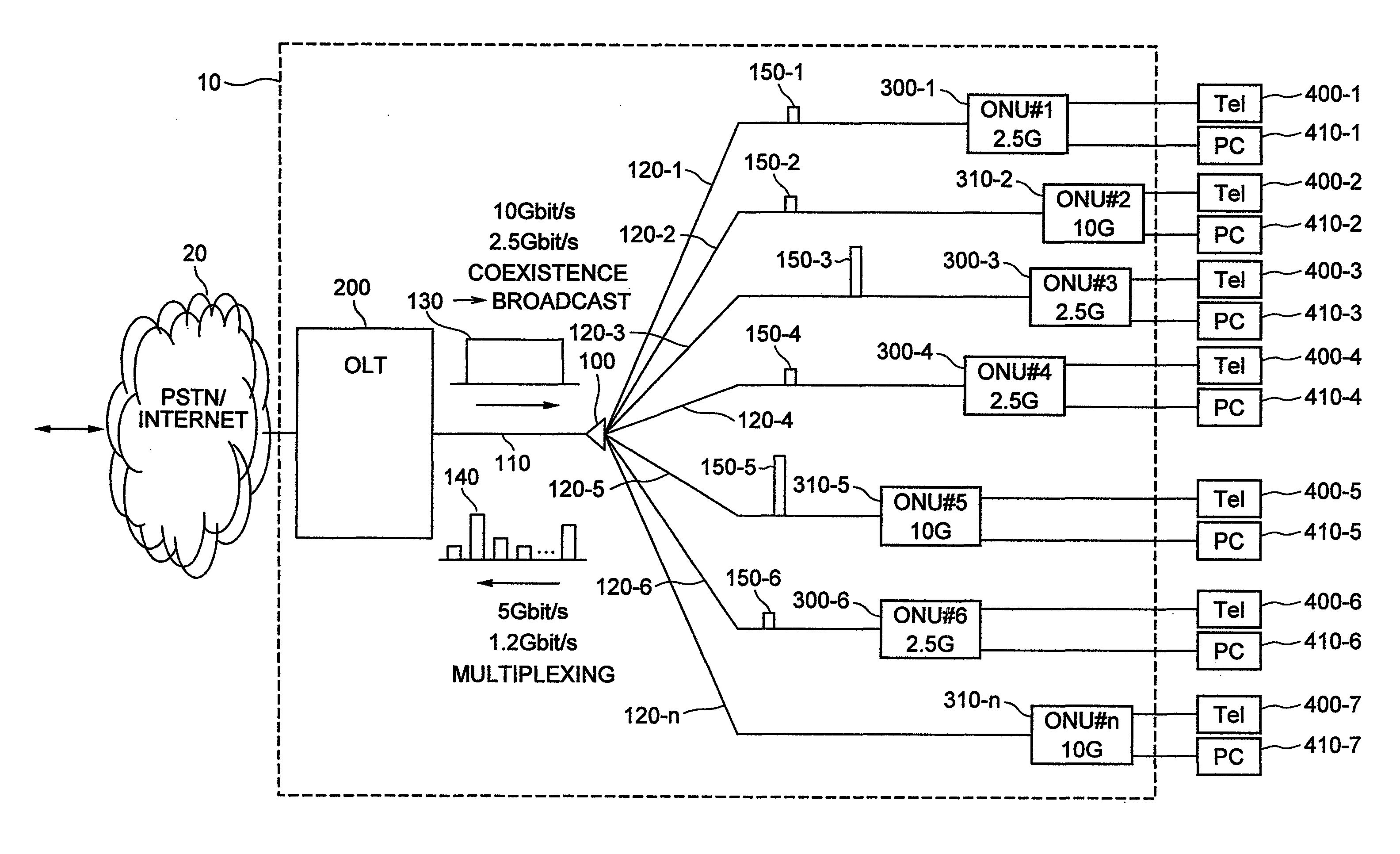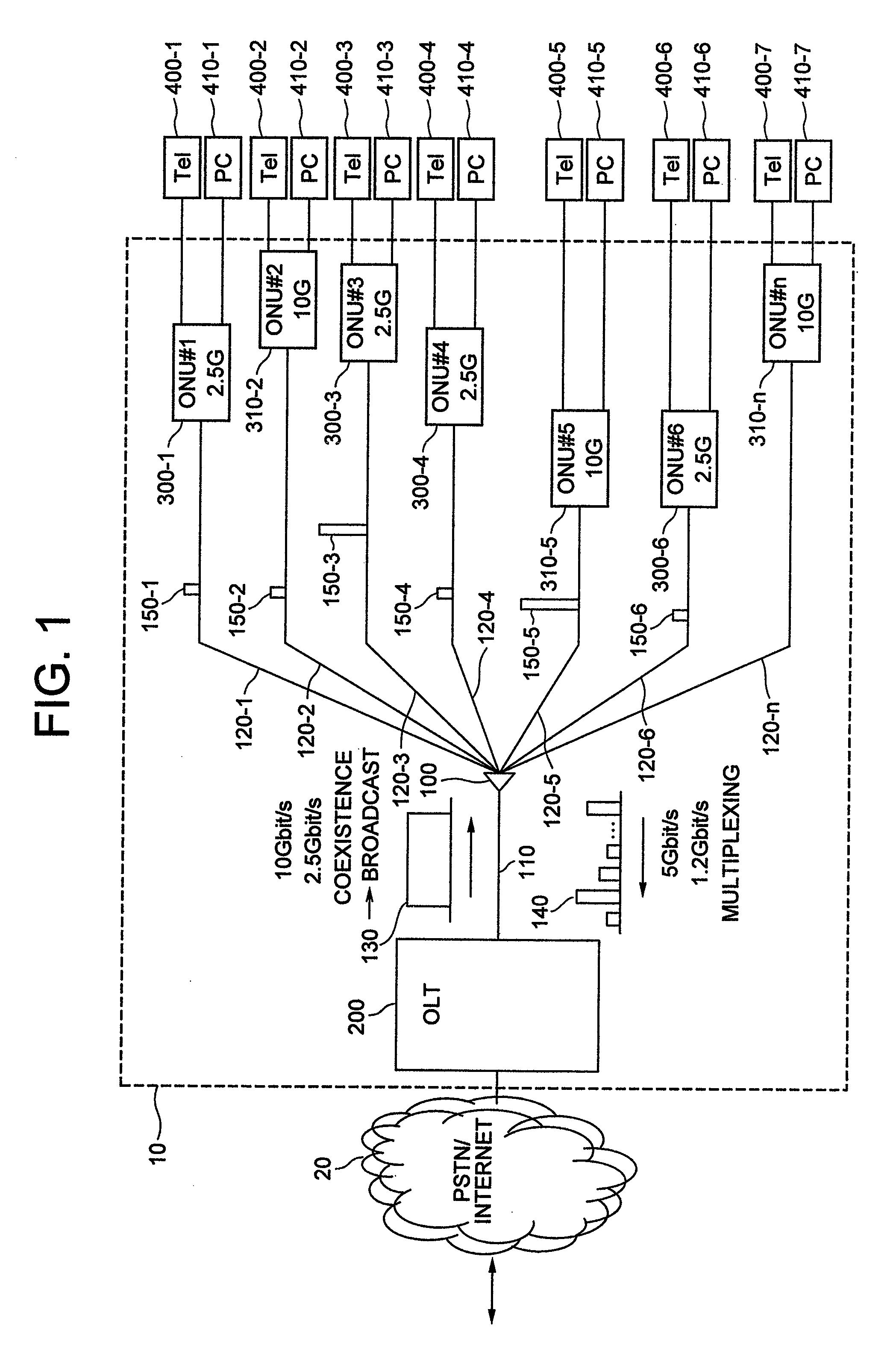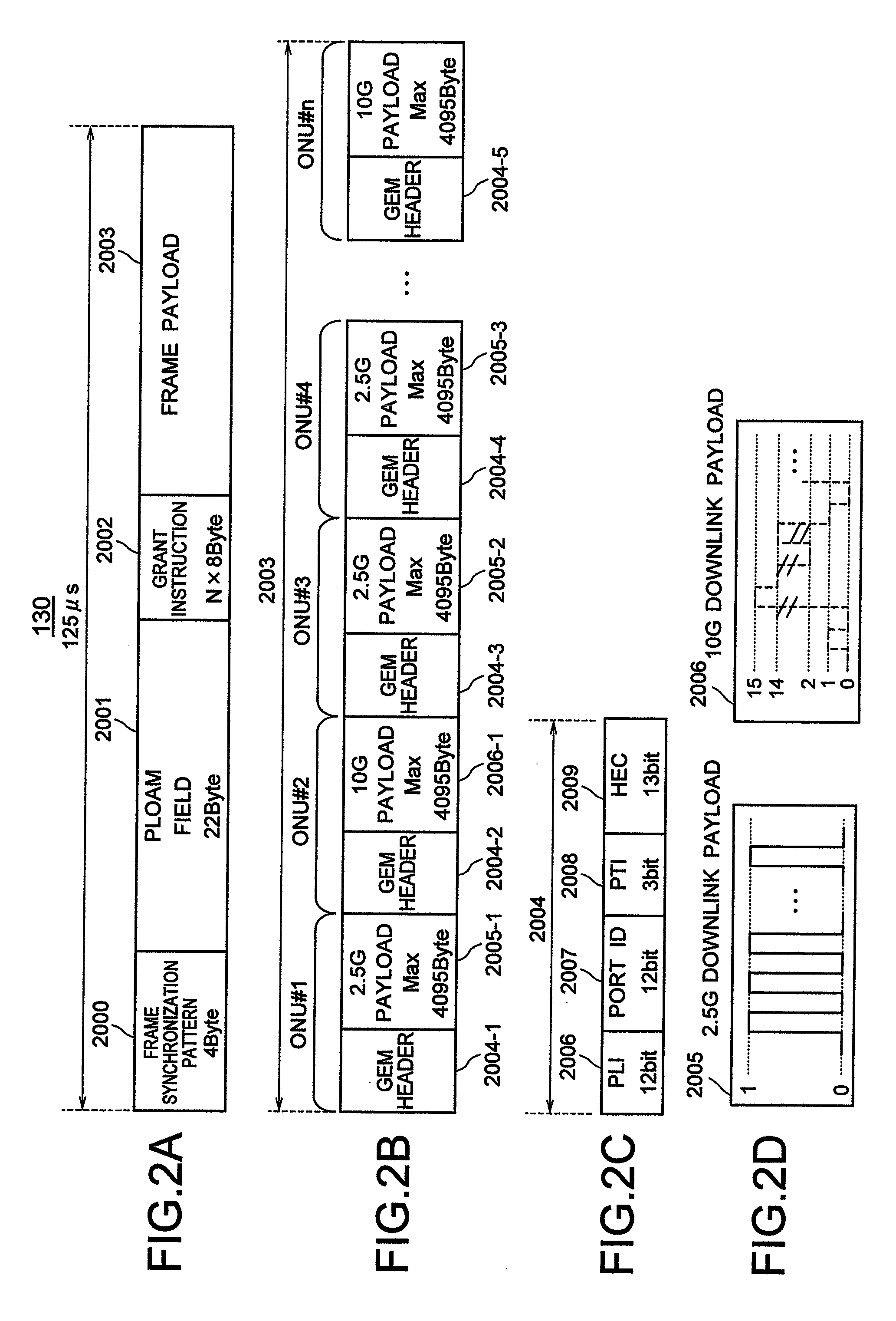Passive optical network system and communication method therefor
a technology of optical network and communication method, applied in multiplex communication, exposure control, instruments, etc., can solve the problems of large expenses for the purpose of exchange, bringing about a comparatively high expense burden for carriers introducing pon and users utilizing pon, and achieve the effect of suppressing the exchange expense of communication devices
- Summary
- Abstract
- Description
- Claims
- Application Information
AI Technical Summary
Benefits of technology
Problems solved by technology
Method used
Image
Examples
Embodiment Construction
[0034]Hereinafter, there will be given an explanation in detail, using the drawings, of the structure and operation of a PON according to the present invention, and citing as an example the structure and operation of a PON in which there coexist a GPON specified in ITU-T Rec. G.984 and 10 GPON handling data at four times the transmission speed of GPON whose introduction is anticipated from now on.
[0035]In the explanation below, the assumption is one of a PON with a structure, similar to that of GPON, that multiplexes by time division variable-length data and processes the same, and taking as examples, for the downlink data transmission speed from the OLT to each ONU, 2.5 Gbit / s (2.48832 Gbit / s but referred to below as 2.5 Gbit / s for simplification) of GPON and 10 Gbit / s (9.95328 Gbit / s but similarly referred to below as 10 Gbit / s) of 10 GPON. Also, as for the uplink data transmission speed from an ONU to the OLT, the explanation is given taking as examples 1.2 Gbit / s (1.24416 Gbit / s...
PUM
 Login to View More
Login to View More Abstract
Description
Claims
Application Information
 Login to View More
Login to View More - R&D
- Intellectual Property
- Life Sciences
- Materials
- Tech Scout
- Unparalleled Data Quality
- Higher Quality Content
- 60% Fewer Hallucinations
Browse by: Latest US Patents, China's latest patents, Technical Efficacy Thesaurus, Application Domain, Technology Topic, Popular Technical Reports.
© 2025 PatSnap. All rights reserved.Legal|Privacy policy|Modern Slavery Act Transparency Statement|Sitemap|About US| Contact US: help@patsnap.com



